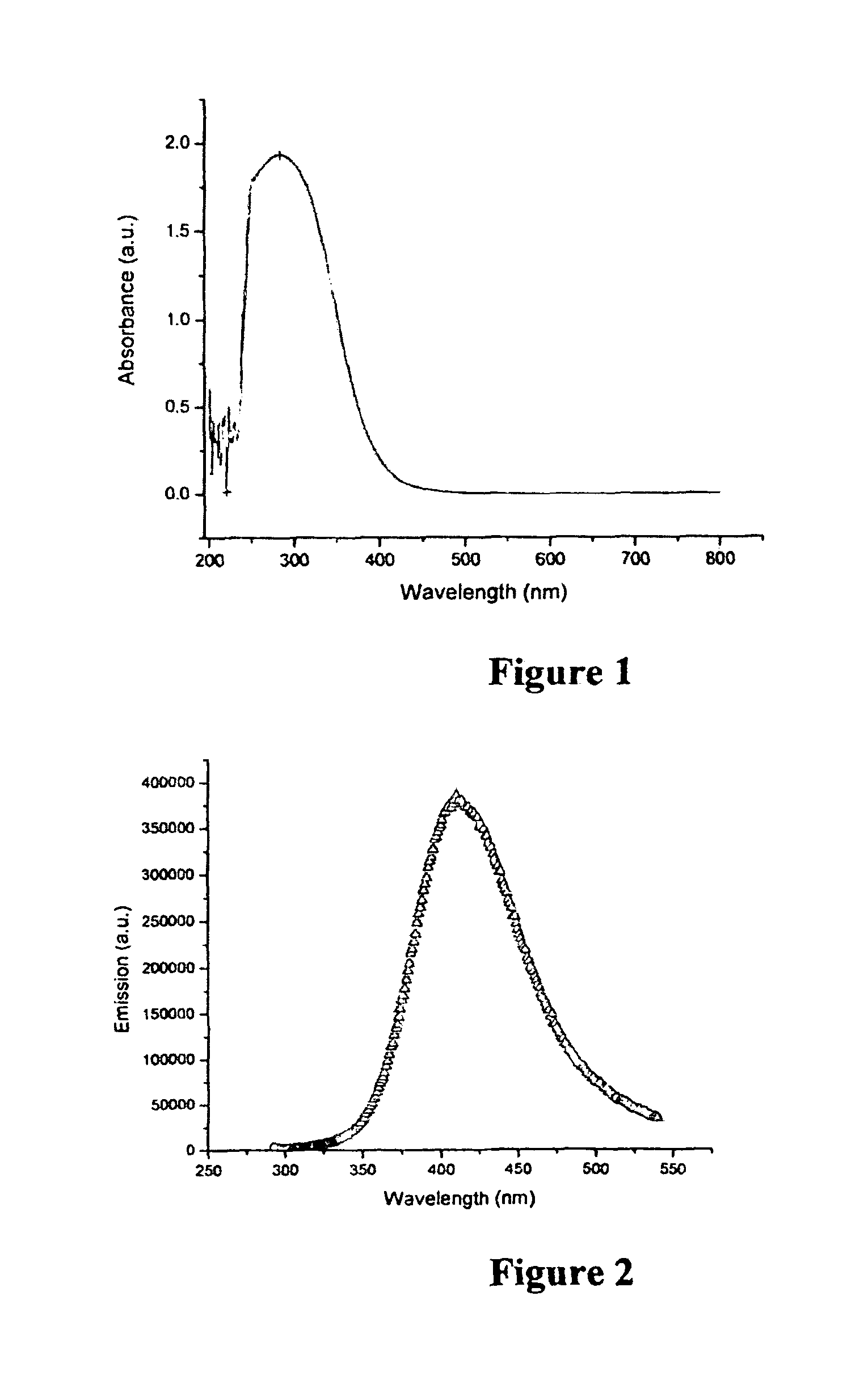Synthesis of polymer coated ceria nanoparticles for biomedical applications
a technology of nanoparticles and nanoceria, which is applied in the direction of nanocapsules, pharmaceutical delivery mechanisms, nanocapsules, etc., can solve the problems of uncoated nanoparticles agglomerating in aqueous solution, nanoceria synthetic procedures reported so far are not likely to be approved by the u.s. food industry, etc., and achieve the effect of eliminating the need for polymer crosslinking
- Summary
- Abstract
- Description
- Claims
- Application Information
AI Technical Summary
Benefits of technology
Problems solved by technology
Method used
Image
Examples
example 1
Synthesis of Dextran Coated Ceria Nanoparticles
[0066]Under ambient conditions, a 1 M cerium nitrate solution (2.17 g in 5 ml of water) was mixed with a 1M Dextran T-10 (5 g in 10 ml of water) to form mixture (I). Under continuous stirring, the mixture (I) is then added dropwise to 30 ml of 29% ammonium hydroxide solution (Fischer, USA) forming mixture (II). Mixture (II) is then stirred continuously for 24 hours. After 24 hours of stirring, the solution turns from a light yellow to a deep brown color. The preparation is centrifuged at a rate of 4000 rpm for two 30-minute cycles to settle down any debris and large particles. The preparation is then purified from free dextran by ultrafiltration using a 30 K Amicon filter.
example 2
Crosslinking and Amination of Dextran Coated Ceria with Epichlorohydrin
[0067]Dextran coated ceria nanoparticles are crosslinked with epichlorohydrin using following procedure under ambient conditions:
[0068]To 3 ml (3 volume) of dextran coated nanoceria particle preparation in Example 1, 5 mL (5 volumes) of 5M NaOH are added while stirring. Then, 2 mL (2 volumes) of epichlorohydrin are added to the stirring solution. The ceria nanoparticle suspension is stirred vigorously for 8 hours at room temperature. Then, 8.5 mL (8.5 volumes) of 30% ammonia is added and stirred overnight at room temperature. The next day, the excess epichlorohydrin and ammonia are removed by ultrafiltration and the nanoparticle buffer is exchanged to 0.025 M Na-Citrate buffer pH 8. At this point, the aminated dextran nanoceria preparation can be concentrated without precipitation of the nanoparticles.
[0069]Epichlorohydrin is used as the crosslinking agent in Example 2, however, it is understood by those skilled ...
example 3
Carboxylated Polymer Coating of Nanoceria Particles
[0090]In another embodiment, following the procedure outlined in Example 1, wherein under ambient conditions, a 1 molar solution of a polyacrylic acid is used in place of the 1 molar solution of dextran, nanoceria particles are coated with a biodegradable polymer containing a plurality of carboxylic groups (carboxylated polymer), wherein a portion of the carboxyl groups are associated with the cerium oxide surface and a portion of carboxyl groups are exposed on the nanoparticle surface and available for conjugation. The carboxylated nanoparticle can be reacted with a diamine, such as ethylene diamine, and correspondingly converted to an amine functionalized nanoparticle.
[0091]Synthesis Method.
[0092]The preparation of polyacrylic acid coated nanoceria (PAA-nanoceria) involves the use of cerium (III) nitrate and polyacrylic acid (PAA). 1 M cerium (III) nitrate (Aldrich, 99%) solution (2.17 grams in 5.0 milliliters (ml) of water) was m...
PUM
| Property | Measurement | Unit |
|---|---|---|
| diameter | aaaaa | aaaaa |
| diameter | aaaaa | aaaaa |
| diameter | aaaaa | aaaaa |
Abstract
Description
Claims
Application Information
 Login to View More
Login to View More - R&D
- Intellectual Property
- Life Sciences
- Materials
- Tech Scout
- Unparalleled Data Quality
- Higher Quality Content
- 60% Fewer Hallucinations
Browse by: Latest US Patents, China's latest patents, Technical Efficacy Thesaurus, Application Domain, Technology Topic, Popular Technical Reports.
© 2025 PatSnap. All rights reserved.Legal|Privacy policy|Modern Slavery Act Transparency Statement|Sitemap|About US| Contact US: help@patsnap.com



